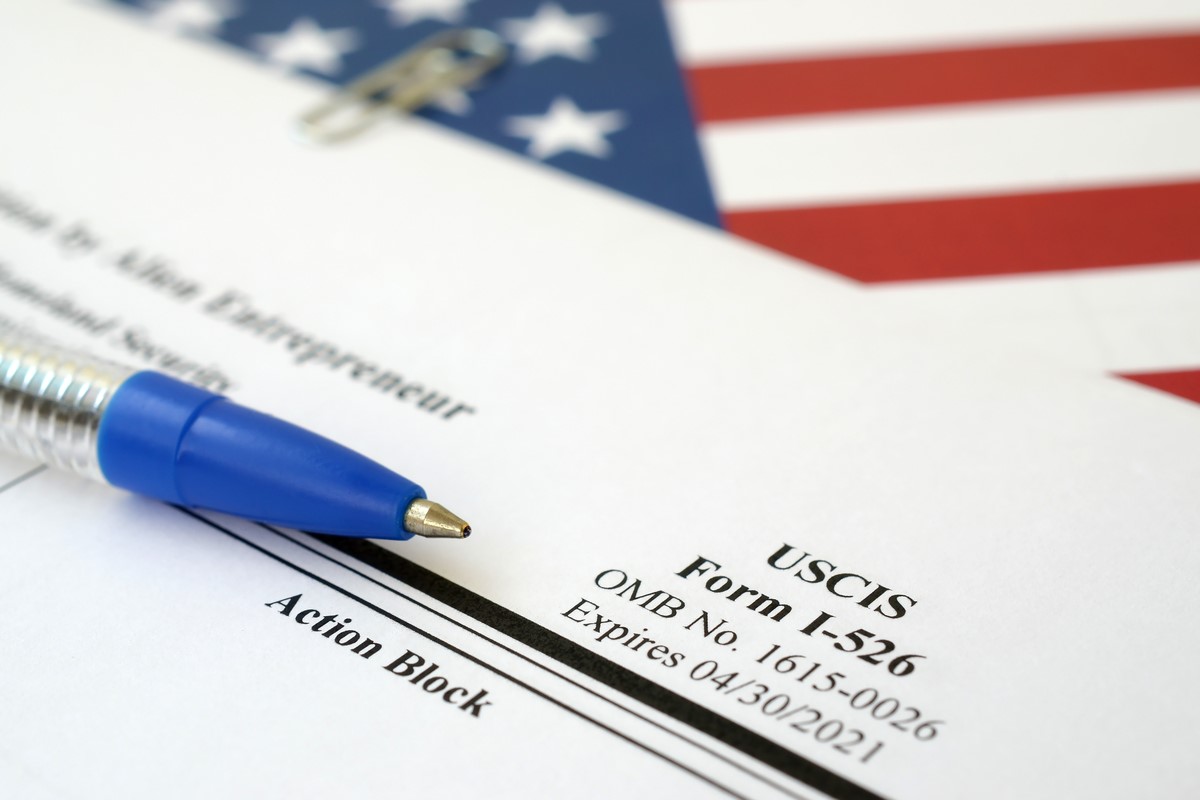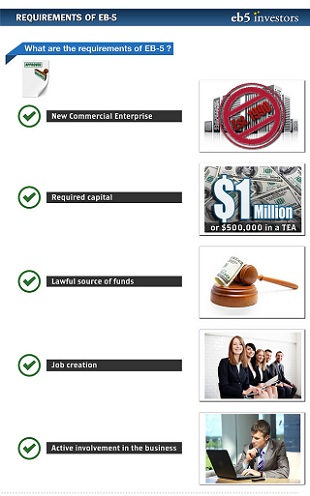
UPDATED BY DILLON COLUCCI AND STAFF JULY 2025
For investors seeking a green card though the EB-5 visa program, the first step in the process is to choose a project and make the required investment. In order to receive the EB-5 visa and start on the path toward a green card and citizenship you must file Form I-526, Immigration Petition for Alien Entrepreneur, together with accompanying evidence in support of the program’s requirements with United States Citizenship and Immigration Services (USCIS). USCIS evaluates and adjudicates I-526 petitions by reviewing these criteria:

-
EB-5 Investment Was Made in a New Commercial Enterprise
As an EB-5 investor, you must prove that your investment was made in an enterprise that is “new.” A new commercial enterprise (NCE) is any for-profit activity established after November 29, 1990, and formed for the ongoing conduct of lawful business, including—but not limited to—partnership (whether general or limited), joint venture, sole proprietorship, holding company, business trust, corporation, or other entity which may be privately or publicly owned. This definition includes a commercial enterprise (and does not include a noncommercial activity, such as operating and owning a personal residence) consisting of a holding company and its wholly-owned subsidiaries, provided that each is engaged in a for-profit activity formed for the ongoing conduct of a lawful business. In the Regional Center context, the new commercial enterprise is the fund where the alien invests. Usually the fund takes the form of a limited partnership or limited liability company. In the direct, non-regional center context, the new commercial enterprise is the business where the alien invests and the business that creates jobs for U.S. workers.
-
Investment of the Requisite Amount of Capital
An EB-5 petition must be supported by evidence that the petitioner has invested the minimum required capital. In both the regional center and direct investment contexts the minimum required investment is $800,000 if the project or NCE (respectively) is located in a targeted employment area (TEA). If the project or NCE is located outside of a targeted employment area, then the minimum amount of investment is $1.05 million.
USCIS expects the investor’s funds to be irrevocably committed to the enterprise. The funds must be “at risk” and used by the new commercial enterprise to create employment.
-
Lawful Source of Capital for EB-5
Funds used for the EB-5 investment must be earned lawfully. The investor must show the full source of the $800,000 or $1.05 million investment and then trace those funds from the investor abroad into the new commercial enterprise. Common sources of funds are salary earnings, distributions from businesses or investments, sale of property, mortgage of personal assets owned by the investor, or gifts from third parties. If the investor receives a gift as the source of funds, the gift-giver must fully trace his or her funds that ultimately became the investment. Funds earned or obtained in the United States while the investor was out of status are not deemed to be lawfully acquired.
-
Investor Engagement in the New Commercial Enterprise
The EB-5 investor is expected to be engaged in the new commercial enterprise either through day-to-day management or by assisting in the formulation of the enterprise’s business policy.
In the EB-5 regional center context, investors in an EB-5 enterprise organized as a limited partnership usually have the rights and duties accorded to limited partners under the state’s Limited Partnership Act. The same is true for a limited liability company. This level of involvement is sufficient for EB-5 purposes. In the direct investment context, the investor can manage the enterprise or formulate policy for the business by acting as a member of the Board of Directors or exercising voting control over the business or by providing input on corporate business decisions.
-
Job Creation for EB-5
The new commercial enterprise must create at least 10 full-time positions for qualifying employees for each EB-5 investor. In the direct investment context, the 10 jobs created must be full-time (35 or more hours per week), permanent, and for W-2 employees of the new commercial enterprise. This definition does not include the EB-5 investor, the EB-5 investor’s family (spouse and children under the age of 21), or any nonimmigrant alien. At the time of the I-526 petition, if the positions are not yet created, the comprehensive business plan must contain a full description of the hiring plan to show the positions that will be created and when those positions will be filled.
In the regional center context, to show that the new commercial enterprise meets the statutory employment creation requirement, the petition must show that the investment will create full-time positions for at least 10 persons, either directly or indirectly, through revenues generated from regional center projects. The number of indirect jobs created through an EB-5 investor’s capital investment is based upon a business plan and a detailed economic analysis. The EB-5 petition must contain evidence, in the form of an economic report, to show that 10 indirect jobs will be created for each investor in the project.
Conclusion
If these requirements are met, the I-526 petition should be approved. If the investor and his family are abroad, they will apply for immigrant visas at a U.S. consulate abroad. When they enter the U.S. on the EB-5 visas, they will become conditional permanent residents of the United States. If the investor and his family are in the United States, they may be eligible to adjust their status to conditional permanent residents. Conditional permanent residence is granted for two years, and at the end of two years, the investor and his family must file Form I-829 to remove those conditions. At that time, the investor must show the new commercial enterprise was sustained during the period of conditional permanent residence, their investment was sustained during the period of conditional permanent residence, and the 10 jobs were created.






